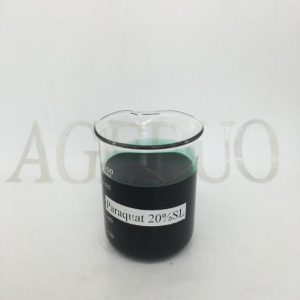What are Pre-Emergent herbicides?
Pre-Emergent herbicides are herbicides that are applied prior to weed germination, with the primary goal of preventing the germination and growth of weed seeds. These herbicides are usually applied in early spring or fall and are effective in suppressing the germination of annual and perennial weeds.
How Pre-Emergent Herbicides Work
Pre-Emergent herbicides work by interfering with the germination process of weed seeds. These chemicals create a barrier in the soil, and when weed seeds come into contact with this barrier, they are affected by the chemicals and thus are unable to germinate properly.
Benefits of Pre-Emergent Herbicides
Long-term control: Preventive herbicides can provide weed control for up to several months.
Reduced Manual Labor: Using Pre-Emergent herbicides can reduce the need for late season mowing, saving time and labor.
Crop protection: Applying Pre-Emergent herbicides before crop emergence protects crops from weed competition and promotes healthy growth.
What is a post-emergent herbicide?
Post-emergent herbicides are herbicides that are applied after weeds have already sprouted and begun to grow. They are typically used to quickly remove weeds that have already grown and are suitable for weed control during a variety of growing periods.
How post-emergent herbicides work
Post-emergent herbicides cause weeds to die by acting directly on their leaves or roots, destroying their cellular tissue. Based on their mode of action, late season herbicides can be categorized into selective and non-selective types.
Advantages of post-emergent herbicides
Rapid effect: Post-emergent herbicides can kill the growing weeds quickly, with fast effect.
Flexible application: they can be used at any stage of weed growth and are highly adaptable.
Precise control: Selective post-emergent herbicides can specifically target certain weeds without harming surrounding crops and plants.
Pre-Emergent vs. Post-Emergent Herbicides
Long-lasting effects
Preventive herbicides are more long-lasting and provide long-lasting weed control, whereas postemergent herbicides are mainly used for immediate removal of weeds that have already grown and have a more short-lived effect.
Timing of application
Preventive herbicides are applied before weeds germinate, usually in the spring or fall, while late season herbicides are used after weeds have germinated and grown and can be applied throughout the growing season.
Range of application
Preventive herbicides are used for weed control over large areas, especially before crops are planted; late season herbicides are used for control of weeds that have already grown, especially in horticulture and landscape management.
Which herbicide should you use?
Choose based on weed species
Knowing the type of weed you need to control is the key to choosing the right herbicide. Different herbicides have different effects on different types of weeds.
Choose based on crop type
When choosing a herbicide, you also need to consider the type of crop and stage of growth. Some herbicides may be harmful to certain crops and therefore need to be chosen carefully.
Selection based on environmental conditions
Environmental conditions, such as climate, soil type and rainfall, can also affect the effectiveness of herbicides. These factors should be taken into account when selecting herbicides to achieve the best results.
Pre-emergence herbicides Recommended
1. Metolachlor
Introduction: Metolachlor is a broad-spectrum preventive herbicide for a wide range of crops, including corn, soybeans, and cotton, that prevents the growth of weeds by inhibiting the germination of their seeds.
Advantages:
Effective on a wide range of annual weeds
Long duration, providing weed control for up to several months
Safe for crops and widely used
2. Glyphosate
Synopsis: Glyphosate is a broad-spectrum herbicide commonly used in large agricultural and non-agricultural areas for strong weed control.
Advantages:
Broad-spectrum, effective against a wide range of weeds
Short residual time and low environmental impact
Can be used as a preventive herbicide at low concentrations.
3. Trifluralin
Synopsis: Trifluralin is applied to cotton, beans, vegetables and other crops, mainly controlling weeds by interfering with weed seed germination and root growth.
Advantages:
Good effect on a wide range of annual weeds
Forms a long-lasting weed barrier in the soil
Wide range of applications, safe for many crops
4. Dichlormid
Synopsis: Dichlormid is mainly used for preventive weed control in cornfields, with good suppression of both annual and perennial weeds.
Advantages:
Dedicated to corn fields with remarkable effect
Strongly inhibit the germination of weed seeds.
Highly safe and harmless to corn growth
Post-emergent Herbicide Recommended
1. Paraquat
Introduction: Paraquat is a non-selective post-emergent herbicide, suitable for removing all kinds of weeds, by rapidly destroying the cellular tissues of weeds, resulting in rapid death of weeds.
Advantages:
Fast-acting and effective weed control
Effective on a wide range of weeds, including persistent weeds
Flexible and can be used in a wide range of environments
2. 2,4-D (2,4-dichlorophenoxyacetic acid)
Introduction: 2,4-D is a selective late season herbicide commonly used on wheat, corn, soybeans and other crops, with good control of broadleaf weeds primarily.
Advantages:
Highly selective, safe for crops
Particularly effective on broadleaf weeds
Wide range of applications, easy to use
3. Flumioxazin
Synopsis: Flumioxazin is a broad-spectrum late season herbicide for soybeans, peanuts, cotton and other crops that causes weeds to die by inhibiting their chlorophyll synthesis.
Advantages:
Effective on a wide range of weeds, including hard-to-reach weeds
Persistent, providing long-term control
Easy to use and safe for crops
4. Glufosinate
Synopsis: Glufosinate is a non-selective late season herbicide for weed control in fruit orchards, vineyards and non-cropland, providing rapid and effective removal of a wide range of weeds.
Advantages:
Broad-spectrum weed control with outstanding results
Good weed control in orchards and vineyards
Fast-acting and flexible
These herbicides have their unique advantages in different application scenarios, and through rational selection and use, efficient weed control can be realized to protect the healthy growth of crops.
How to choose the right herbicide? It needs to be chosen after you understand the characteristics of the weeds, if you don’t know these weeds, we suggest that you need to consult an expert or communicate with us, we will give you professional advice and send free samples for you to try!
Post time: Jun-04-2024











